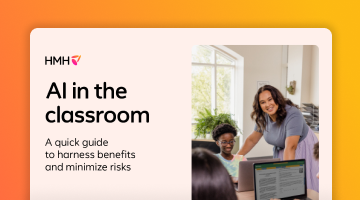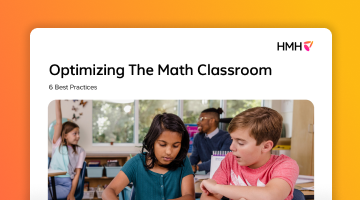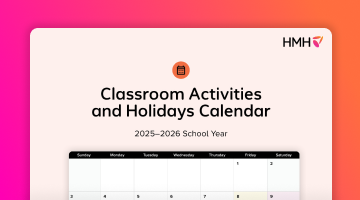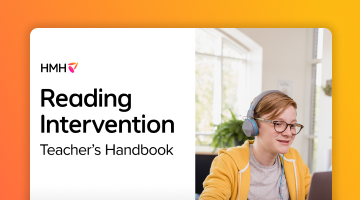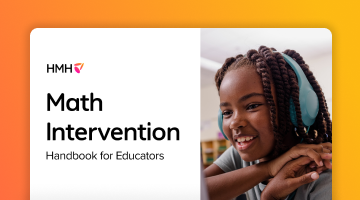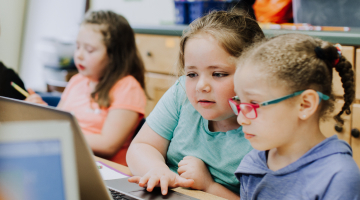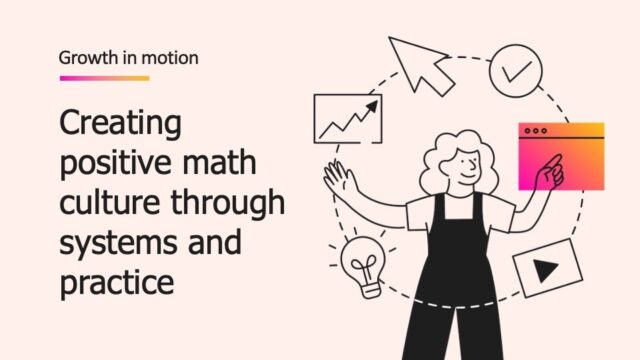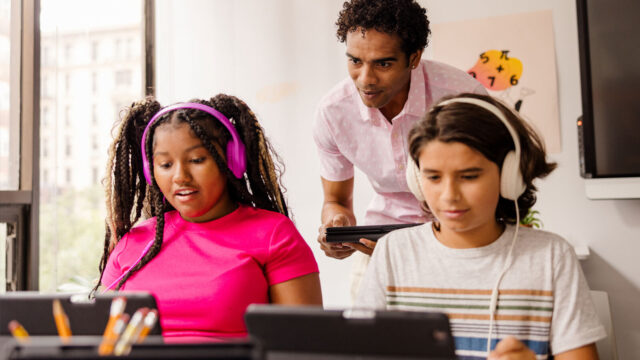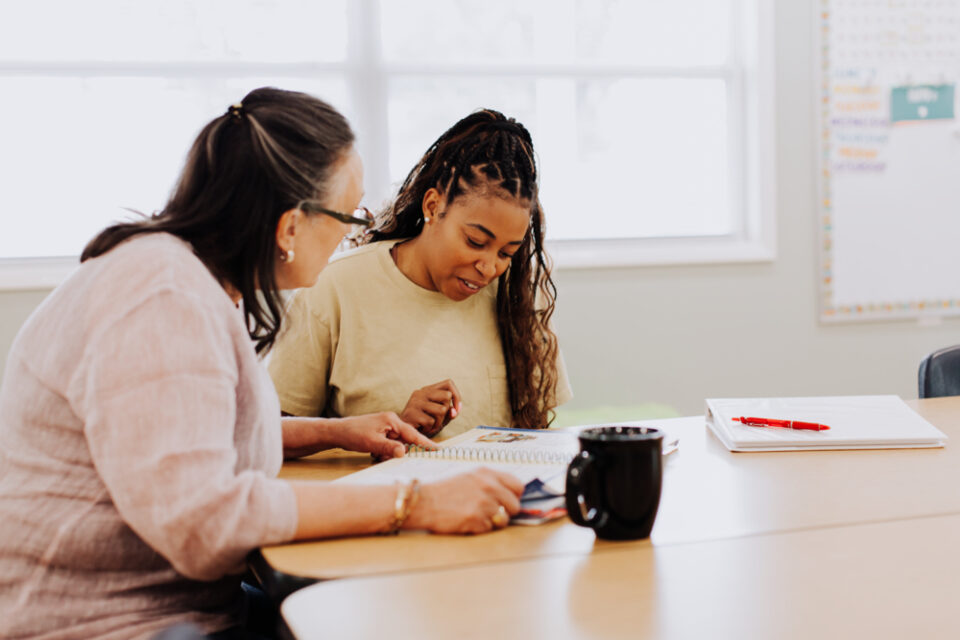
In today’s dynamic educational landscape, teachers are continually striving to meet the diverse needs of their students while navigating evolving curriculum, instructional practices, and learning environments. As a coach, I know effective instructional coaching can play a vital role in supporting teachers on this journey—not by evaluating them, but by partnering with them to enhance instructional effectiveness and student outcomes.
What is instructional coaching?
Instructional coaching is a collaborative, non-evaluative process in which a coach works alongside a teacher to reflect on instructional practices, explore new strategies, and set actionable goals that improve teaching and learning. At its core, coaching is about building trust, fostering professional growth, and keeping student success at the heart of every conversation. Through a cycle of planning, observation, feedback, and reflection, instructional coaching empowers teachers to take ownership of their development and continuously refine their practice in meaningful ways.
Coaching strategies for teachers
When jumping in with an instructional coach, it’s important to define some ways that teachers and coaches can work together to reach their goals. Here are a few suggested strategies for working together.
1. Relationship building and goal setting
A common misconception about instructional coaching is that the coach’s primary role is to evaluate a teacher’s performance. In reality, for coaching to be effective, it must begin with a strong, trusting relationship between the teacher and coach. That’s why I prioritize the initial meeting as a foundation for everything that follows.
During this first conversation, I take time to clearly explain what instructional coaching is—and just as importantly, what it is not. I often share my own experiences as a teacher who benefited from coaching to emphasize that this is a partnership, not an evaluation. My goal is for the teacher to feel supported, not judged.
To ensure the teacher feels heard, I rely on open-ended questions that demonstrate I’m here to listen, not to prescribe. One of my go-to tools during this phase is the Questioning Guide for Coaching Conversations,which helps me stay curious and responsive to the teacher’s unique context and needs.
From this initial dialogue, we’re able to collaboratively identify goals for the first coaching cycle, outline the structure for our next visit, and agree on how we’ll stay connected between meetings. Investing this time upfront always pays off—I walk away with a deeper understanding of the teacher’s perspective, which helps me tailor coaching strategies that are truly relevant and supportive throughout our work together.
2. Professional learning community: Turning collaboration into action
Professional learning communities, or PLCs, offer a dedicated space for critical, collaborative conversations centered on student learning. These sessions are an opportunity for educators to come together around high-priority needs and burning questions that directly impact student success.
The three primary goals of a PLC are:
- Focusing on learning
- Fostering engagement
- Driving results
In an action-focused PLC, the process begins with identifying a specific problem to solve. For example, a common challenge educators face is meeting the diverse needs of learners within their classrooms. While teachers are committed to differentiating instruction, they may lack the resources, time, or structure to implement it effectively.
Once the problem is identified, the next step is to discuss its potential impact on student learning if successfully addressed. In our example, solving the issue means that every student will receive instruction tailored to their needs—whether through intervention, grade-level support, or enrichment.
After defining the problem and envisioning its impact, the PLC must outline clear, actionable steps. Utilizing the Differentiated Instruction Action Plan, each teacher might:
- Select a teacher-led small group resource from their curriculum
- Identify the students who would benefit from that resource
- Plan and teach a lesson using the chosen material
During the next PLC session, teachers would reflect on the effectiveness of their lesson—sharing what worked, what didn’t, and how student learning was impacted. This reflective loop fosters continuous improvement and ensures that each PLC cycle is purposeful and student-centered.
3. Taking PLCs further: peer observations
One of the most impactful coaching strategies I’ve used with teachers is peer observation. It provides a structured opportunity for meaningful teacher engagement and supportive feedback, all centered around a real-time, authentic classroom experience. While the idea of being observed by peers may feel intimidating at first, I’ve witnessed some of the most transformative “aha” moments occur during these sessions. To ensure peer observations are both productive and supportive, I guide teachers through a three-step process: clarify, observe, and debrief.
Clarify
Before the observation, the teacher who will be observed meets with colleagues to:
- Share the context and goals of the lesson
- Explain the instructional strategy being used (e.g., differentiation)
- Identify the specific type of feedback they would like from observers
This stage sets the tone and purpose for the observation and allows observers to focus their attention meaningfully.
Observe
During the lesson, observers focus on:
- Student interactions
- Evidence of learning
- Teacher moves aligned to the identified strategy
Observers may use the Differentiation Observation Template or any preferred note-taking tool. I encourage them to capture specific actions and moments, and to conclude their notes with several “I noticed . . .” statements that are student-centered and objective.
Debrief
After the lesson, we hold a structured debrief session. I always begin by inviting the observed teacher to reflect first:
- What went well?
- What challenges emerged?
- Did the strategy have the intended impact?
Once the teacher has shared, observers contribute their student-focused observations and wonderings. As a coach, I model a collegial tone and positive intent to ensure feedback feels constructive and safe.
We then move into planning next steps, guided by three reflective questions:
- What strategy or resource do you want to focus on in your classroom?
- What is your next step in enhancing your practice?
- How will you measure success in using this strategy or resource?
Peer observations create a cycle of shared learning, vulnerability, and professional growth. When embedded into the PLC process, they transform theoretical discussions into real, actionable practice—supporting teachers in trying new approaches, seeing those approaches in action, and reflecting collaboratively with trusted peers.
A shared commitment to continuous improvement
Effective instructional coaching is rooted in trust, collaboration, and a shared commitment to continuous improvement. Whether through reflective conversations, goal-setting, peer observations, or action-driven PLCs, impactful coaching strategies prioritize teacher voice, promote professional growth, and keep student learning at the center. By investing in relationships and creating structured opportunities for teachers to engage, reflect, and take informed action, coaches can help build a culture of learning that empowers both educators and students to thrive.
***
Learn more about how our approach to instructional coaching can support teachers in meeting their professional goals with HMH Coachly.
Download Building Your School Culture: An Administrator's Guide today.

